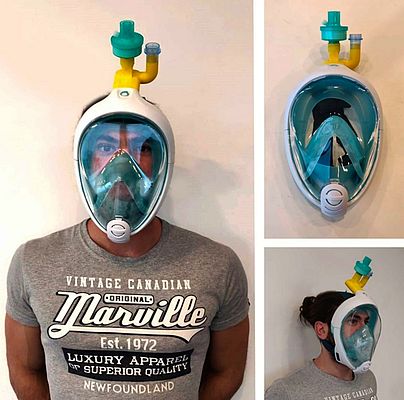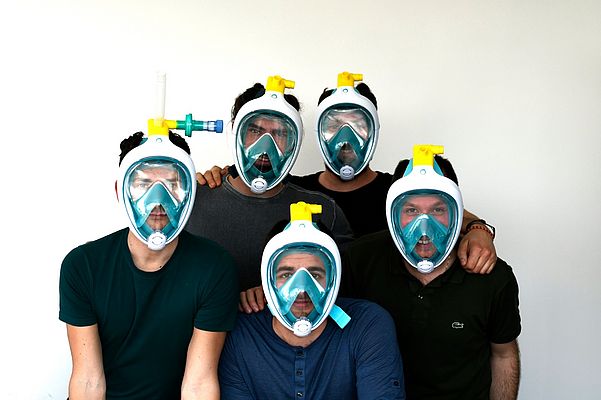IEN Europe: ING. CRISTIAN FRACASSI, FOUNDER AND CEO OF ISINNOVA, CAN YOU EXPLAIN WHAT THE COMPANY DOES AND WHAT SERVICES IT OFFERS?
C. Fracassi: Isinnova is a research centre of the Lombardy region. We develop the ideas of companies, private individuals, and also our own. We carry out research for patents and we design and create prototypes, run test, file patents, and search for companies willing to put the idea on the market and we follow them in terms of communication. We also identify calls for tenders and financing to help our clients recover the money invested in Research & Development.
IEN Europe: WHY DID YOU CHOOSE THE FAMOUS THOMAS EDISON MOTTO "HAVING AN IDEA IS A GOOD THING, BUT IT'S EVEN BETTER TO KNOW HOW TO CARRY IT OUT"? HOW DOES IT REFLECT YOUR MISSION?
C. Fracassi: That motto reflects our work. Many have ideas that stay in their heads, like smoky thoughts. We want to be concrete, transform that smoke into something concrete, tangible, because only then does the idea not remain a hallucination.
IEN Europe: HOW DID THE IDEA OF MAKING 3D VALVES TO COPE WITH THE LACK OF THIS TYPE OF COMPONENTS WAS BORN, STARTING IN THE FIRST PLACE FROM THE HOSPITAL OF CHIARI, IN BRESCIA?
C. Fracassi: The hospital in Chiari (Brescia) had launched a request for help because it had run out of valves for the respirators used for Covid-19 patients and needed to have more spare ones quickly. Isinnova printed about a hundred of them in 3D in 24 hours and they were immediately used.
IEN Europe: CAN YOU EXPLAIN BETTER HOW THE "CHARLOTTE" VALVE WORKS AND WHY IT WAS OF FUNDAMENTAL IMPORTANCE IN THIS CRITICAL PHASE OF HEALTH EMERGENCY?
C. Fracassi: Inserted in place of the mask mouthpiece, the Charlotte valve allows to separate the inlet and outlet air flows. In this way, it is possible to connect the oxygen tube at the inlet, which starts from the wall, and at the outlet first a filter and then a positive pressure regulating valve. To work, however, the mask needs two other small modifications: the elimination of the two membranes that separate the mouth area from the eye area and the inversion of the membrane that is located at the mouth, hidden by the white mask.
IEN Europe: IN RECENT WEEKS, ISINNOVA HAS ALSO GAINED NATIONAL AND INTERNATIONAL PROMINENCE THANKS TO ANOTHER PROJECT: THE TRANSFORMATION OF THE EASYBREATH DECATHLON SNORKELING MASK INTO A HOSPITAL INTENSIVE CARE MASK.
HOW DID THIS IDEA COME ABOUT? WHAT ROLE DID MASSIMO TEMPORELLI, PRESIDENT AND CO-FOUNDER OF THE FABLAB, HAVE IN THIS WHOLE PROJECT?
C. Fracassi: After making 3D-printed valves for the intensive care equipment of the Chiari Hospital, we were contacted by Dr. Renato Favero, former head physician of the hospital of Gardone Valtrompia, who informed us that the respiratory masks used for sub-intensive therapy would soon be missing.
To avert the emergency, his idea was to transform snorkeling masks into breathing masks. He didn't know how to do it, and we took action: he gave us the medical information, we added our engineering knowledge and designed a new component for the connection to the respirator. The result was the Charlotte valve. In 10 hours the project was completed: in one night the first pieces were printed, then tested for three days in the hospital of Chiari, the first one that supported us in all our requests, despite having to face many other problems, like all hospitals.
Massimo Temporelli helped us create contacts with Decathlon, to understand how many masks they had in stock, recover the first pieces to make prototypes, test them, and obtain the 3D files of the mouthpiece from which we could start designing the Charlotte.
IEN Europe: WHAT WERE THE PRODUCTION TIMES AND THE DIFFICULTIES ENCOUNTERED?
C. Fracassi: The most difficult part was undoubtedly the organizational one. Although we had created some illustrative videos, and included the files to download on our site, every maker and every hospital called in Isinnova, and this created some difficulties for us. We received over 10 thousand messages between LinkedIn, Facebook, email etc. and counted 11 different ways to use the Charlotte valve: with double filter, with or without balloon, with or without non-return valve, with modified shapes, in different materials like metal etc. The bureaucratic times represented another huge problem: neither the mask nor the valve connection have been certified yet even though they are widely used successfully in over 50 hospitals in Italy and in thousands of hospitals all over the rest of the world. So far, their use is subordinate to an emergency situation in health care facilities that find it difficult to find the devices usually used.
IEN Europe: WHAT HAS BEEN DECATHLON REACTION TO YOUR PROJECT? IS IT CONTRIBUTING BY DONATING THE EASYBREATH MASKS?
C. Fracassi: Initially, Decathlon was very cooperative. They donated about ten test masks and provided us with CAD drawings of the two mouthpieces they created, and I learned from the newspapers that it donated a number of masks. The company then relied on the Politecnico di Milano to carry out the necessary tests and experiments, which are still ongoing, to proceed with the conversion of the snorkel mask into a respiratory mask. Isinnova, which is an accredited research centre, developed and filed the patent for the project in record time.
IEN Europe: ISINNOVA HAS MADE THE DOCUMENTATION FOR PRINTING THE "CHARLOTTE" VALVE AVAILABLE FREE OF CHARGE ON ITS WEBSITE. THIS GENEROUS GESTURE OF SHARING IS ENABLING OTHER COMPANIES TO PRINT YOUR MODEL AND THUS OFFER THEIR CONTRIBUTION IN THE FIGHT AGAINST THE COVID-19 AT A TIME OF GLOBAL HEALTH EMERGENCY.
HOW MANY COMPANIES HAVE JOINED YOUR CALL TO DATE?
C. Fracassi: More than 2600 companies have registered on our website (the list is public and can be consulted by any hospital). They have written to us from all over the world. We have personally activated about a hundred of them, in order to obtain the first 500 pieces we needed for the hospitals in Brescia. They sent us almost 2000 valves when we asked for 500... it was magnificent!
We are sending the surplus ones (excluding the ones that arrived broken) abroad (for example to Tunisia, Australia, Uzbekistan and Morocco). Many other companies have moved independently, teaming up directly with the hospitals. We shared the file on purpose not to be a filter, we would have been a bottleneck. Free sharing, on the other hand, has allowed us to create nodes and ramifications not necessarily passing through Isinnova. To date we have obtained over 2.5 million downloads of the file.
IEN Europe: ISINNOVA IS A POSITIVE EXAMPLE FOR MANY COMPANIES FACING MAJOR DIFFICULTIES DUE TO THE CRISIS, AS IT HAS NOT ONLY RESPONDED INGENIOUSLY TO THE HEALTH EMERGENCY BUT HAS ALSO MADE ITS KNOWLEDGE AVAILABLE TO EVERYONE, FOR THE GOOD OF ALL.
WHAT MESSAGE DO YOU WANT TO SEND AT THIS PARTICULAR TIME TO OTHER COMPANY OWNERS LIKE YOURSELF?
C. Fracassi: Isinnova responded with speed and determination to a call. Many times each of us receives requests for help, it is up to us to decide whether to accept or refuse. ''The future is in our hands, let's not keep them in our pockets'' is one of my quotes that reflects the spirit of the whole team at Isinnova. Many people have told us that we did something trivial, a simple connection (badly designed), and that for a two-hour job we got an undeserved glory... I agree with them, we did something trivial, but we did it, the others just thought it. What I want to say is that we must always try to be on the side of those who actually do than those who tell us how to do things...
Maria Bonaria Mereu
m.mereu@tim-europe.com


















